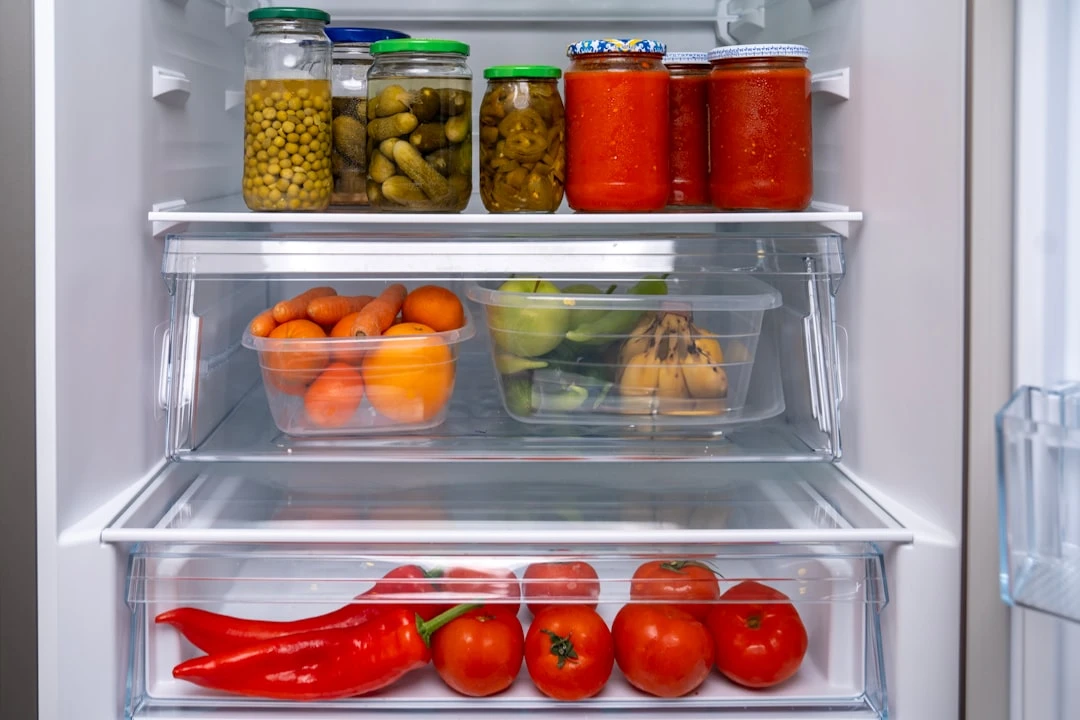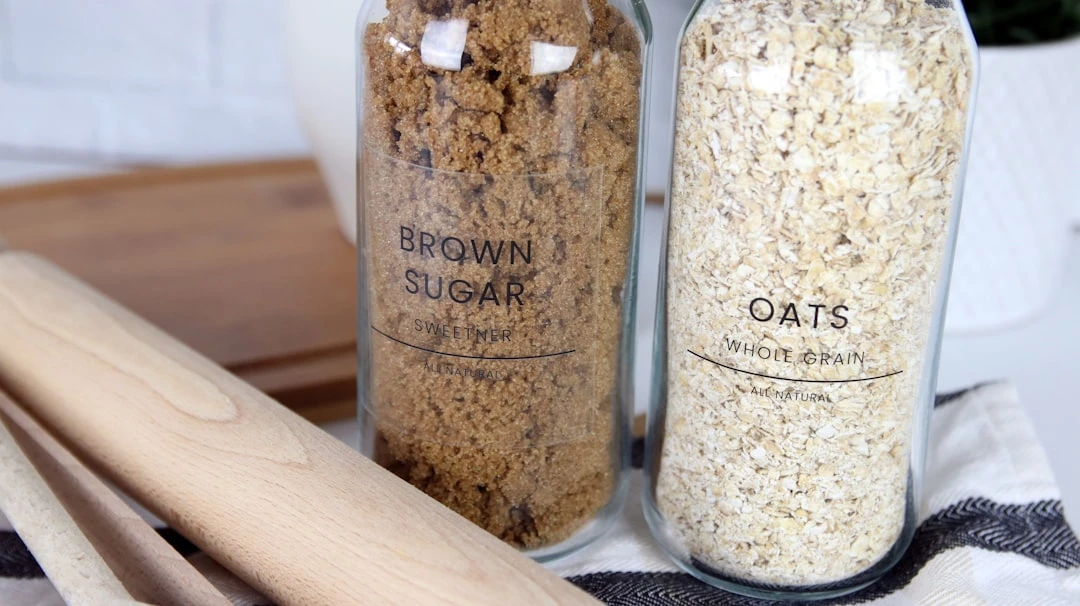How to Extend Food Shelf Life: Practical Tips for Every Estonian Home

Did you know that the right temperature and simple habits can significantly reduce your food expenses? Food that spoils too quickly is wasted money and time. The following steps will help keep your food fresh and edible longer — they work for both a small rental apartment kitchen and a large family household.
The right temperature is half the battle
Your refrigerator works best when you keep it at a temperature between 1–4 °C. In the freezer, food maintains quality longer at –18 °C or below. Cool hot food to room temperature for up to 2 hours before placing it in the cold — this prevents condensation and excess moisture, which promotes spoilage.
The refrigerator's "microclimate" is not uniform. The door shelf is warmer (suitable for condiments and pasteurized juices), upper shelves have more stable temperatures (dairy products, ready-made meals), the bottom shelf is coldest (raw meat and fish, always in closed containers to avoid cross-contamination). Vegetable drawers maintain higher humidity — suitable for leafy salad, herbs, and cucumber.
Packaging and containers that keep freshness in
Air and moisture are freshness's greatest enemies. Use airtight glass containers, silicone bags, or vacuum bags to reduce oxidation and drying. Cheese and sausage keep better in parchment or wax paper, which allows them to "breathe" while controlling moisture.

Keep cut fruits and vegetables in closed containers — lemon juice, moist paper towel, or an air seal helps preserve crispness. For bread, use a bread box at room temperature: a plastic bag makes it soft and moldy faster, and the refrigerator ages it. The best tip is to slice bread and store it in the freezer, then toast slices directly from the freezer as needed.
Also pay attention to overall kitchen cleanliness and humidity levels — a well-organized kitchen helps prevent cross-contamination and unpleasant odors. Check out simple routines for efficient cleaning and how to control humidity and mold that damages both cabinets and food: Tips on how to prevent mold in the bathroom.
Freezing golden rules
The point of freezing is to "pause" time. To do this, work with portions and air humidity:
Divide food into small portions and form into flat packages — this way it freezes and thaws evenly and texture is preserved.
Pre-freeze berries and herbs spread out on baking paper, then pack — prevents pieces from freezing together.
Blanch most vegetables before freezing (brief heat treatment and quick cooling on ice). This slows enzymatic changes that otherwise create a "rubbery" texture.
Write the name and date on the bag. General guideline: cooked meals 2–3 months, meat and poultry 6–12 months, bread 3 months, berries 8–12 months. The fattier the food, the shorter the quality period, since fat becomes rancid.
Thaw slowly in the refrigerator. For quick cooking, it's also safe to thaw in the microwave and cook immediately.
Smart storage tips for different foods
Dairy products last longer in the cooler zone of the refrigerator, not on the door shelf. Cover opened packages immediately and consume within a few days. Yogurt and sour cream need consistent temperature — don't leave them at room temperature for long periods.
Eggs stay fresh longer in their original carton in the refrigerator, not on the door; this prevents temperature fluctuations. The original carton also protects against odors and reduces moisture evaporation.
Fruits and vegetables require different conditions. Apples and pears prefer cold (0–4 °C), keep bananas and avocados at room temperature; cold damages their texture. Tomatoes and peaches maintain better flavor at room temperature. Potatoes suit a dark cool place (about 6–10 °C), not the refrigerator; onions want dry and airy — keep them separate from potatoes.
Store meat and fish on the bottom shelf in separate containers. If not using within 1–2 days, freeze. Marinating helps maintain quality temporarily, but doesn't make spoiled food safe.
Leftovers and remaining food should be divided into shallow containers, cooled quickly, and refrigerated within 2 hours. Consume within 2–3 days or freeze.
Keep spices and dry ingredients in airtight containers in a dark, cool place. Moisture is flavor's enemy; avoid storing jars above the stove where temperatures fluctuate.
If you have a small kitchen, you might want to think about smart storage solutions or thoughtful planning. When choosing a new home, pay attention to kitchen storage options — explore what solutions new developments offer and which apartment purchase would support your cooking habits.
Labeling and timing: FIFO works at home too
The simple habit of "first in, first out" means newer products move to the back of the shelf and older ones come to the front. Add a date to every food item and if needed, mark it "opened." Keep a small "eat first" box in the refrigerator where you group food that's about to expire — this guides you to use them first.
In the freezer, keep a list (or a photo of the shelf on your phone) so you don't forget your supplies. Do a monthly "inventory" and highlight items that need quicker use. Clearly mark the contents and freezing date on every frozen food container or bag.
Small routines, big difference in reducing food waste
Plan the week's meals, write a detailed list, and shop accordingly. Check the labels: "best before" is the safety deadline, "best by" relates to quality — after this date, check the smell, taste, and appearance and use your senses.
Use leftovers creatively: overripe banana can be baked into pastries, stale bread can make croutons, vegetable scraps can be cooked into broth. Sometimes equipment maintenance also helps — clean household appliances work more efficiently and hygiene is better; check practical tips on topics like dishwasher cleaning and washing machine cleaning if you want to review your household appliance maintenance routine.
Home storage starts with a good kitchen
Good lighting, ventilation, and smart storage solutions help keep food better. If you're planning a move or kitchen renovation, see what layouts and storage solutions apartments in Tallinn offer and what solutions new developments provide.
Need a larger kitchen or a bigger refrigerator? Find the right place from our portal: browse apartments for sale and see what new developments in Tallinn offer. If you're looking for a flexible solution in the countryside instead, it's also worth checking the section on factory houses.
Carefully set temperatures, proper packaging, and a few simple routines save your time and money every week. If you want your kitchen and whole home to work for you, find the right space on Kinnisvara24 — start with apartment purchase or discover fresh new developments.




